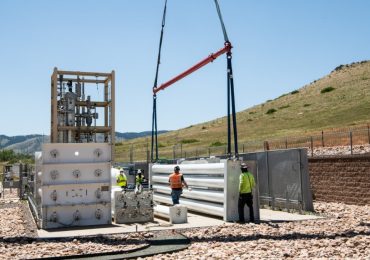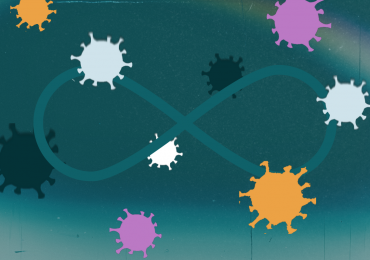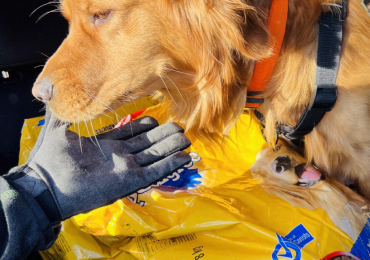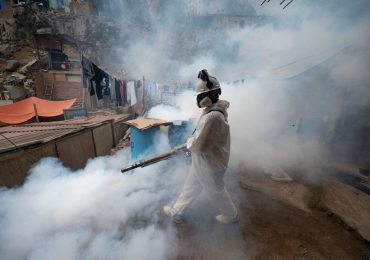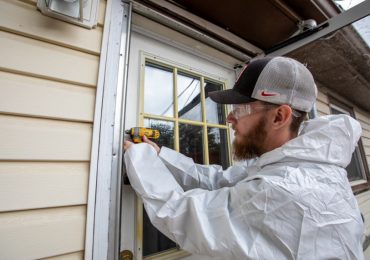By KIM BELLARD
We’ve had some cold weather here lately, as has much of the nation. Not necessarily record-breaking, but uncomfortable for millions of people. It’s the kind of weather that causes climate change skeptics to sneer “where’s the global warming now?” This despite 2023 being the warmest year on record — “by far” — and the fact that the ten warmest years since 1850 have all been in the last decade, according to NOAA.
One of the parts of the globe warming the fastest is the Arctic, which is warming four times as fast as the rest of the planet. That sounds like good news if you run a shipping company looking for shorter routes (or to avoid the troubled Red Sea area), but may be bad news for everyone else. If you don’t know why, I have two words for you: zombie viruses.
Most people are at least vaguely aware of permafrost, which covers vast portions of Siberia, Alaska, and Canada. Historically, it’s been literally frozen, not just seasonally but for years, decades, centuries, millennia, or even longer. Well, it’s starting to thaw.
Now, maybe its kind of cool that we’re finding bodies of extinct species like the woolly mammoth (which some geniuses want to revive). But also buried in the permafrost are lots of microorganisms, many of which are not, in fact, dead but are in kind of a statis. As geneticist Jean-Michel Claverie of Aix-Marseille University, recently explained to The Observer: “The crucial point about permafrost is that it is cold, dark and lacks oxygen, which is perfect for preserving biological material. You could put a yoghurt in permafrost and it might still be edible 50,000 years later.”
Dr. Claverie and his team first revived such a virus – some 30,000 years old — in 2014 and last year did the same for some that were 48,000 years old. There are believed to be organisms that ae perhaps a million years old, far older than we’ve been around. Scientists prefer to call them Methuselah microbes, although “zombie viruses” is more likely to get people’s attention.
He’s worried about the risks they pose.
He told The Observer: “At the moment, analyses of pandemic threats focus on diseases that might emerge in southern regions and then spread north. By contrast, little attention has been given to an outbreak that might emerge in the far north and then travel south – and that is an oversight, I believe. There are viruses up there that have the potential to infect humans and start a new disease outbreak.”
Well, you might shrug; there’s new viruses and pathogens coming along all the time, as COVID reminded us. The difference, Dr. Claverie pointed out, is this: “Our immune systems may have never been in contact with some of those microbes, and that is another worry. The scenario of an unknown virus once infecting a Neanderthal coming back at us, although unlikely, has become a real possibility.”
Jill Brandenberger, climate security research lead at the Pacific Northwest National Laboratory told USA Today. “We know there’s bacterial, fungal and viral pathogens that are in permafrost. We know that upon thaw, all three of those classes of pathogens could be released. What we don’t know is how viable it is for them to stay alive and then infect.” Tell that to the people who died in the anthrax outbreak in 2016, in northwest Siberia.
It’s worse than just the permafrost warming. Dr. Claverie warns:
The danger comes from another global warming impact: the disappearance of Arctic sea ice. That is allowing increases in shipping, traffic and industrial development in Siberia. Huge mining operations are being planned, and are going to drive vast holes into the deep permafrost to extract oil and ores.
Those operations will release vast amounts of pathogens that still thrive there. Miners will walk in and breath the viruses. The effects could be calamitous.
Marion Koopmans, of the Erasmus Medical Center in Rotterdam, agrees, telling The Observer:
If you look at the history of epidemic outbreaks, one of the key drivers has been change in land use. Nipah virus was spread by fruit bats who were driven from their habitats by humans. Similarly, monkeypox has been linked to the spread of urbanisation in Africa. And that is what we are about to witness in the Arctic: a complete change in land use, and that could be dangerous, as we have seen elsewhere.
And, if you’ve started to get your head around all that, if the permafrost thawing isn’t scaring us enough with the zombie viruses, there’s also a vicious global warming cycle involved. It turns out that permafrost is believed to have double the amount of carbon than is currently in the atmosphere, and which thawing permafrost releases in the form of methane and carbon dioxide.
“Methane is a potent greenhouse gas,” said Dr. Thomas Birchall of the University Center in Svalbard, who was the lead author on a new study. “At present, the leakage from below permafrost is very low, but factors such as glacial retreat and permafrost thawing may ‘lift the lid’ on this in the future.” And, as it turns out, another new report concluded, such leakage is not being factored into most of our existing climate models.
“What happens to the carbon in permafrost is one of the biggest unknowns about our future climate,” said Christina Schaedel, senior research scientist at Woodwell Climate Research Center and lead author of the report. “Earth system models are critical to predicting where, how and when this carbon will be released, but modeling teams currently don’t have the resources they need to depict permafrost accurately. If we want more accurate climate predictions, that needs to change.”
We don’t even have good ways to accurately estimate the thawing of the permafrost, although we’re starting to use satellite data and – you guessed it! — AI to help improve those estimates.
So if your five-year-old is worried that global warming will impact Santa’s North Pole home, you can still reassure him/her about that, but there’s not much reassurance we can give kids about what permafrost thawing means for zombie viruses and accelerated global warming.
Kim is a former emarketing exec at a major Blues plan, editor of the late & lamented Tincture.io, and now regular THCB contributor
Leave a comment


